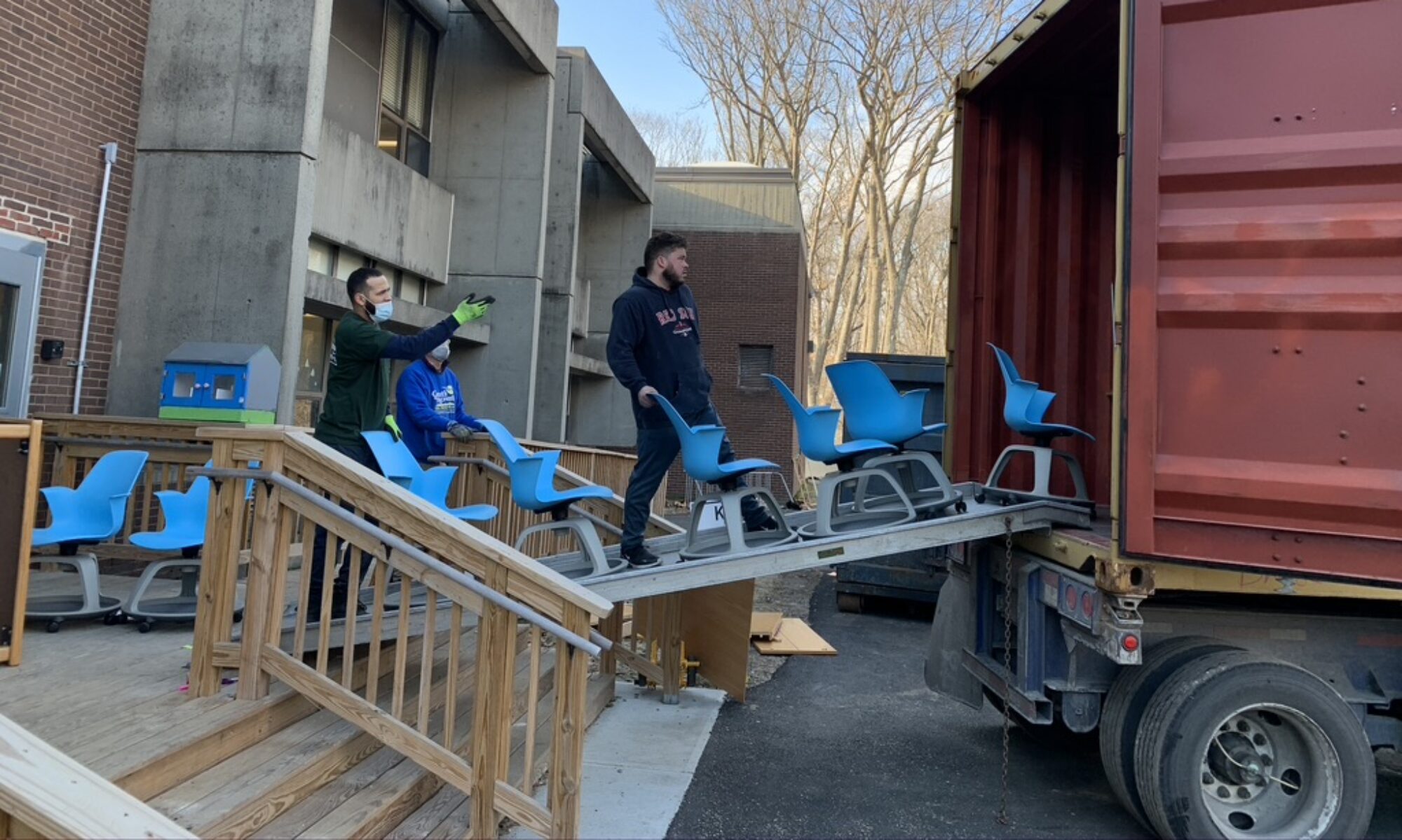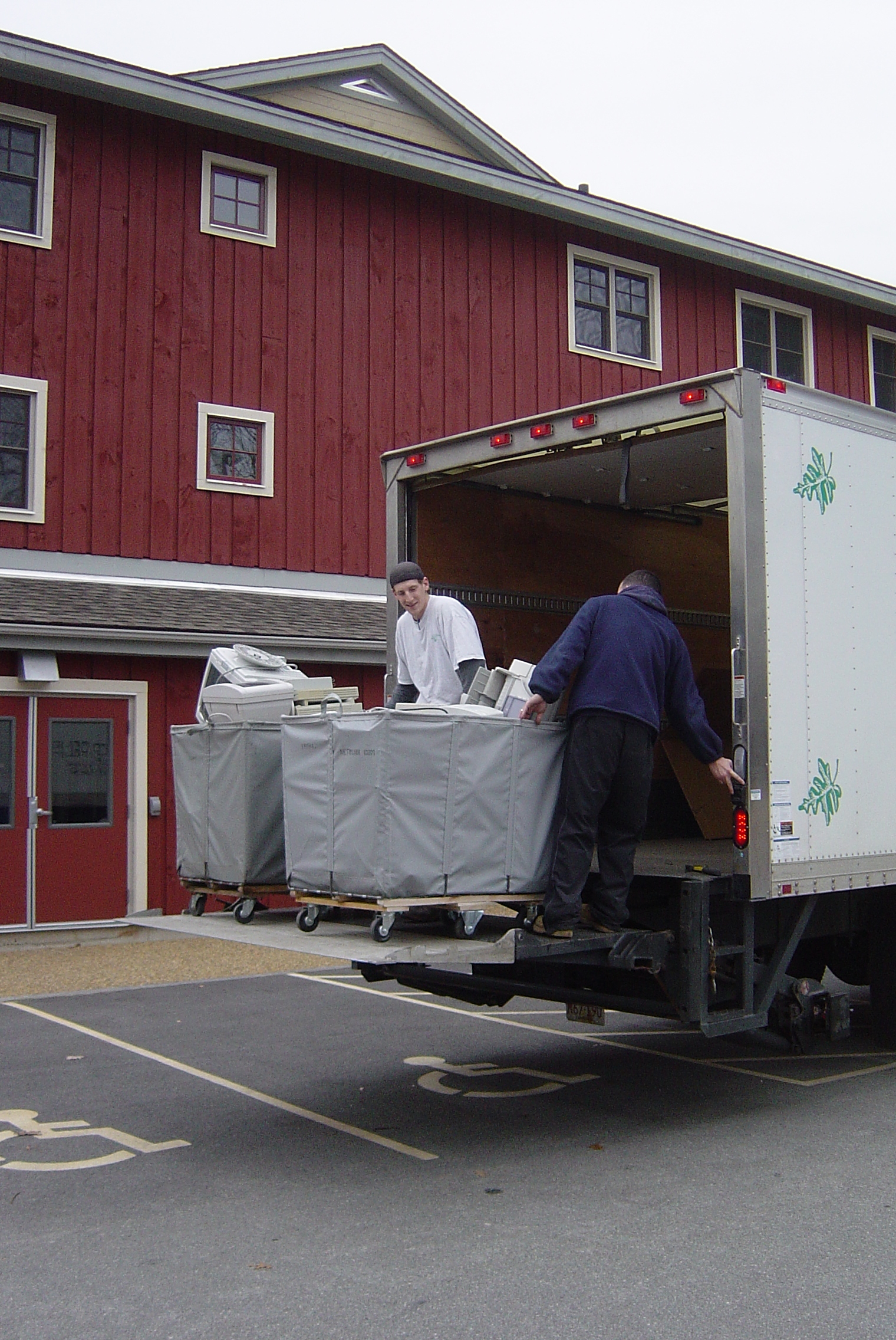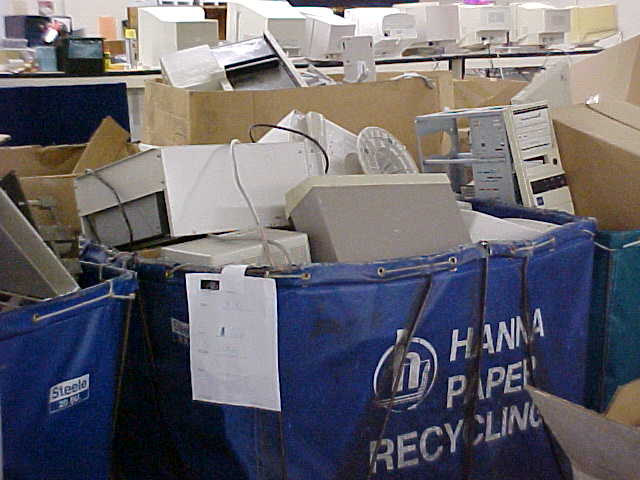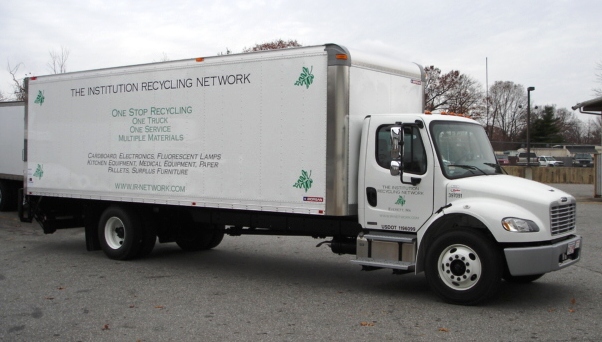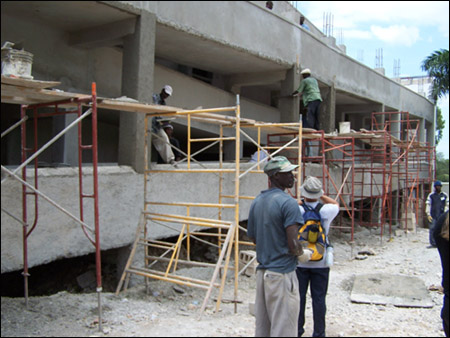
The humanitarian crisis caused by the Haiti earthquake has fallen out of the evening news. But that doesn’t mean the crisis is in any way diminished.
At this point, four months after Haiti’s earthquake, the situation has been stabilized in terms of the most urgent needs for food, water, medicines, and temporary shelter. These supplies are flowing into the country and are being fairly efficiently distributed where they are most needed. Another top priority has been to repair roads and ports. You’ll recall from January and February the many news stories about supplies piled up at the Port au Prince airport, and hundreds of containers stacked on U.S. piers waiting for Haitian port facilities to reopen. This situation is improving. Port au Prince facilities have partially reopened, and containers are also being routed through smaller Haitian ports and through the Dominican Republic.
Now the focus shifts to long term reconstruction. The earthquake destroyed tens of thousands of businesses, and many hundreds of schools, hospitals and health clinics. Hundreds of thousands of homes need to be rebuilt and furnished for Haitian families. Several IRN partners are already on the ground building simple sturdy wooden residences, much more resilient in the face of a future earthquake than the mud and cement huts they replace. This effort will go on for years.
As structures are rebuilt, there’s equal need for furnishings and supplies to fit them out. Tables and chairs, bureaus, beds and mattresses for homes. Desks and chairs and bookshelves for schools. File cabinets and shelving and desks for businesses. Cabinets and exam tables and beds and a thousand other supplies for clinics and hospitals. Stoves, ranges, refrigerators, serving equipment for private and institutional kitchens.
In short, there’s critical long-term need in Haiti for surplus property that can be sourced from the U.S. I don’t want to beat the drum for my own organization because this is what we do, but every business and institution in the U.S. should remember, before tossing surplus into the dumpster, that there are people just a couple hundred miles from our borders for whom that surplus is, quite literally, a treasure. And they aren’t necessarily in Haiti; they aren’t necessarily beyond our borders. There are millions of people right here in the U.S. – families coming out of the welfare system, homeless people establishing new lives, families recovering from natural disaster or economic misfortune – whose need for furnishings to equip their lives is equally great. It should be painful for any American to know that usable surplus is being thrown away in America.
It’s hard for almost anyone in the U.S. to imagine what living conditions are like in Haiti. In the U.S. the average house size is about 2,400 square feet, for the average household of 2.6 people. In Haiti the average house size is about 200 square feet, for an average household of about 7 people. That’s more than twice as many people living in a home less than one-tenth as big. You almost have to stop and read that again: more than twice as many people, living in a home less than one-tenth as big. As Americans, we are among the most fortunate people on earth. It’s not much to ask that we offer our used but still usable furnishings to those who are among the least fortunate.
